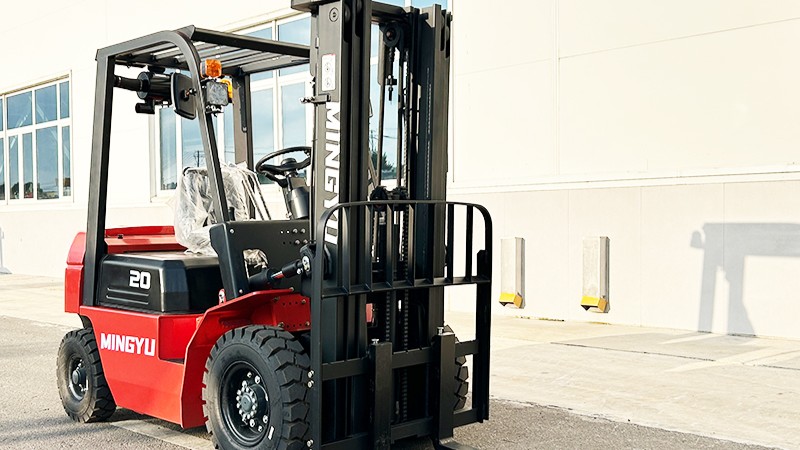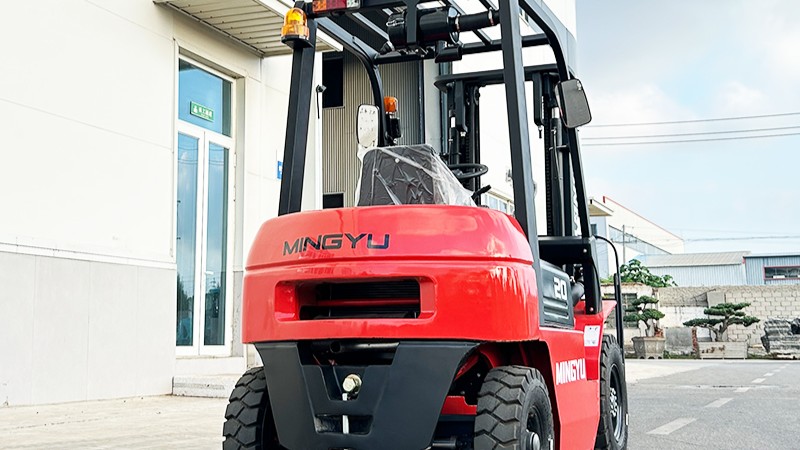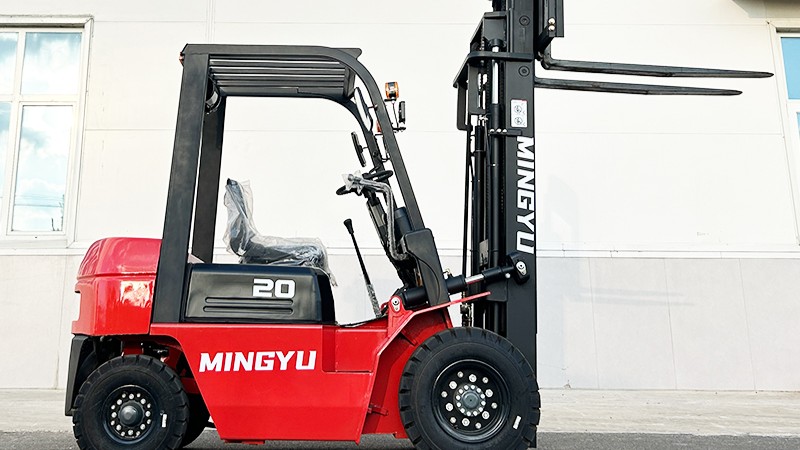Forklifts and stackers are both vital pieces of equipment in the material handling industry, but they serve distinct purposes and are designed for different operational needs. A forklift is a powerful industrial vehicle used primarily for lifting and transporting heavy loads over short distances, often featuring forks that can be raised and lowered to move pallets or other large items. In contrast, a stacker is generally a more compact machine focused on stacking goods vertically in storage areas, such as in warehouses or distribution centers. While both devices enhance efficiency in logistics and supply chain operations, their core functionalities diverge significantly. Forklifts are typically equipped with engines or electric motors, allowing them to handle substantial weights and navigate varied terrains, whereas stackers may come in manual, semi-electric, or fully electric models, emphasizing precision in stacking rather than long-distance transport. Understanding these basic distinctions is crucial for businesses looking to optimize their operations, as selecting the wrong equipment can lead to inefficiencies, increased costs, or safety hazards. On platforms like Alibaba International, buyers can explore a wide range of both forklifts and stackers, comparing specifications to find the best fit for their specific requirements, whether for heavy-duty industrial use or lighter warehouse tasks.
The functional differences between forklifts and stackers extend beyond their basic definitions, impacting their suitability for various tasks in environments like manufacturing plants, ports, and retail warehouses. Forklifts are renowned for their versatility and strength, capable of lifting loads up to several tons and moving them across uneven surfaces, thanks to features like robust tires and advanced hydraulic systems. They often include additional attachments for specialized tasks, such as clamps for handling non-palletized goods or extensions for reaching higher shelves. Stackers, on the other hand, are designed with a focus on vertical space utilization, enabling users to stack items neatly in confined areas without the need for extensive maneuvering. For instance, a pallet stacker might only lift loads to moderate heights but excel in organizing inventory in tight aisles. This distinction means that forklifts are ideal for loading and unloading trucks or relocating heavy materials in large facilities, while stackers are better suited for order picking, stock rotation, and maintaining organized storage systems. Moreover, stackers tend to be more energy-efficient and easier to operate for repetitive tasks, reducing labor costs and training time. By recognizing these functional nuances, businesses can make informed decisions when browsing Alibaba International's extensive catalog, ensuring they invest in equipment that aligns with their operational demands and boosts overall productivity.
Application scenarios further highlight the differences between forklifts and stackers, as each machine thrives in specific settings based on load capacity, mobility, and environmental factors. In bustling logistics hubs, forklifts are indispensable for handling bulk goods, such as in shipping yards where they move containers or in large warehouses where they transport palletized products across wide spaces. Their ability to operate outdoors and on rough terrain makes them a go-to choice for industries like construction and agriculture. Stackers, however, shine in indoor environments like retail backrooms or automated storage systems, where their compact design allows for efficient stacking in high-density layouts without obstructing pathways. For example, in an e-commerce fulfillment center, stackers might be used to organize seasonal inventory on shelving units, while forklifts manage incoming and outgoing shipments. Safety considerations also vary; forklifts require trained operators due to their higher power and potential risks, whereas many stackers are user-friendly with intuitive controls, minimizing accidents in busy workplaces. On Alibaba International, buyers can evaluate these scenarios by reviewing product details, customer reviews, and technical specifications, helping them choose equipment that not only meets their functional needs but also complies with safety standards and spatial constraints, ultimately enhancing workflow efficiency.
When it comes to selecting between a forklift and a stacker on Alibaba International, several factors should guide the decision, including budget, space availability, and specific operational goals. Forklifts generally represent a larger investment due to their advanced features and higher load capacities, but they offer long-term value for businesses with heavy-duty requirements and frequent transport needs. Stackers, being more affordable and low-maintenance, are perfect for small to medium enterprises or those with limited storage areas seeking cost-effective stacking solutions. The platform provides a global marketplace where buyers can compare brands, request quotes, and access after-sales support, ensuring a seamless purchasing experience. Additionally, considering trends like automation and sustainability, electric models of both equipment types are gaining popularity for their eco-friendly benefits and reduced operational costs. By leveraging Alibaba International's resources, such as supplier verification and customized solutions, businesses can confidently invest in the right machinery, whether it's a robust forklift for industrial scaling or a nimble stacker for optimized storage, thereby driving growth and competitiveness in the global market.
Post time:Oct.13.2025



